Although there are portable power supply testers on the market that are inexpensive, it often becomes necessary to test whether a power supply is good or bad with only a multi-meter handy. The following steps detail how to perform this.
<br>
WARNING: When working with electricity always follow proper safety procedures. Remove jewelry from your hands. Do not attempt to open enclosures labeled “Non-Serviceable” or with warnings of electric shock. Do not touch capacitors which may still be holding an electric charge.
<br>
- Power down the system and remove the power cable(s) from the device.
- Open the server case and unplug the power connectors inside.
- Follow the large bundle of wires from the power supply to the motherboard. You will find a large, plastic connector. This is typically white but may also be black.
- Press the release down on one side of the connector and pull up to remove it.
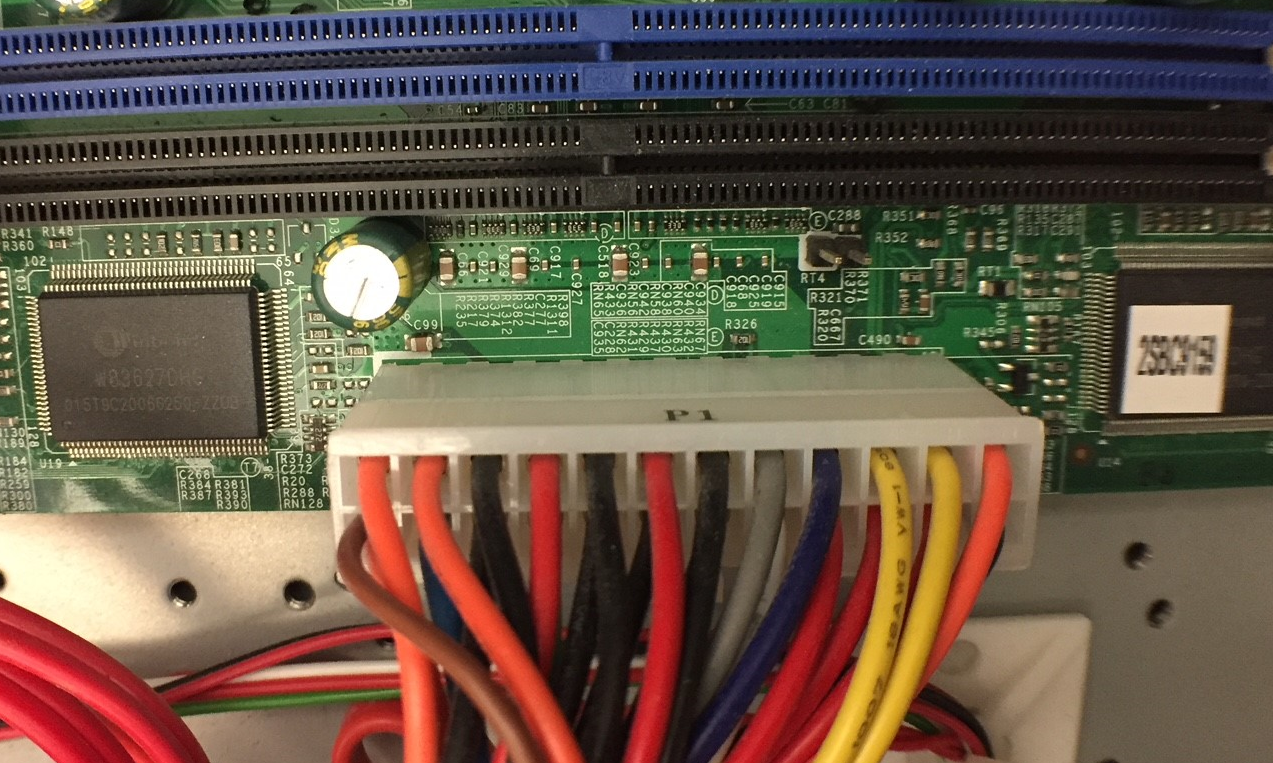
- A smaller bundle will connect to a 4 or 8-pin connector elsewhere on the motherboard. Disconnect these as well.
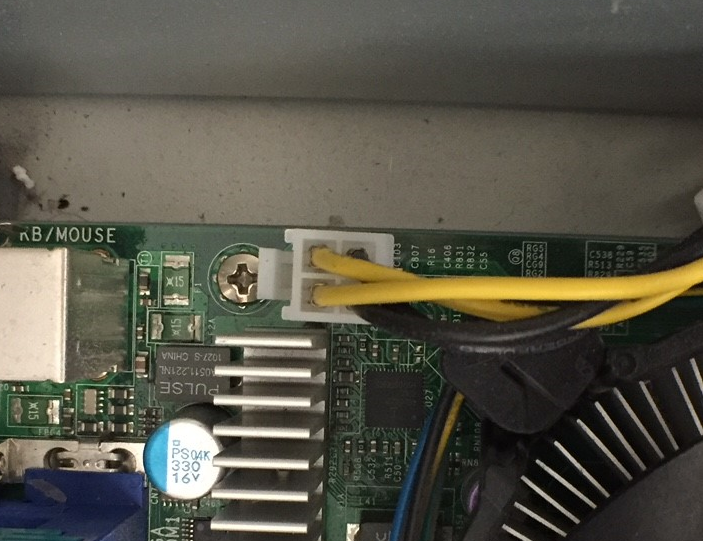
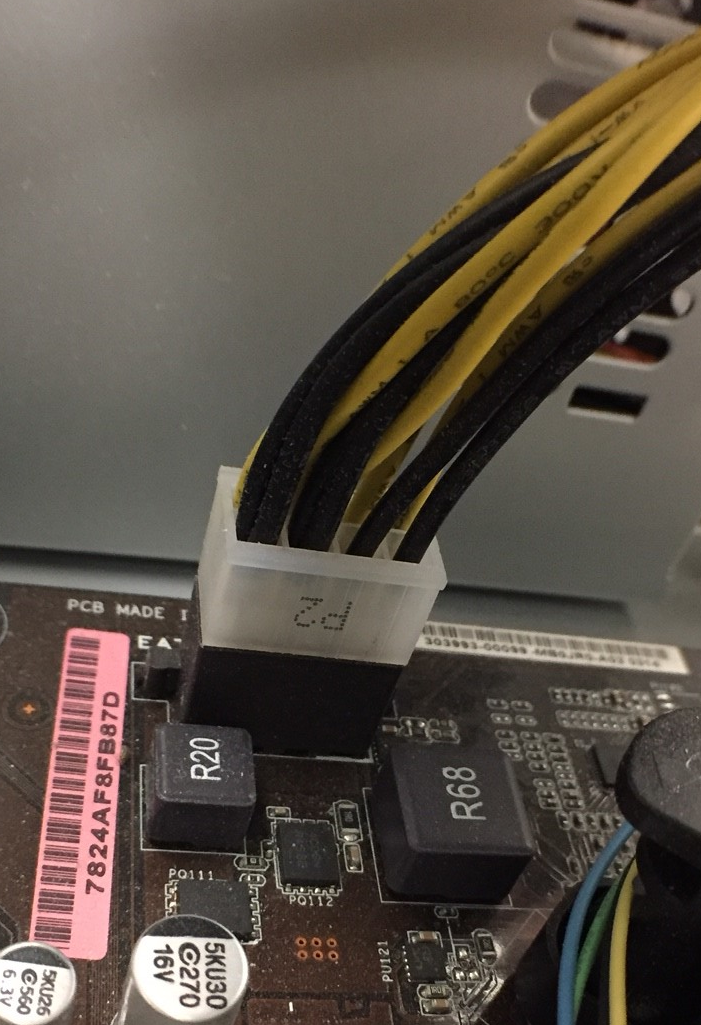
- It is not necessary to remove the entire power supply from the chassis; just pull the connectors to a place you can easily access them.
- Examine the pinout diagrams. While some machines may have a 20-pin connector, others will have a 24-pin connector. With the pins facing you and the release clip towards the right the top-left pin will be pin number 1 and follow down the left side before beginning again at the top of the next column.
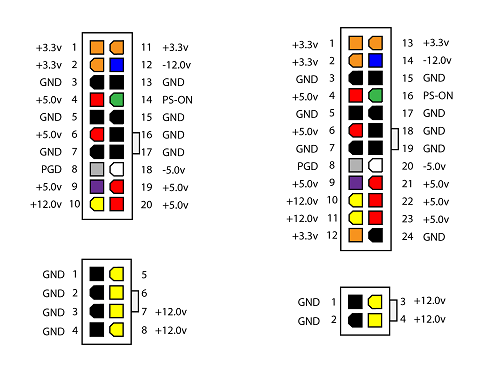
- You will need a short piece of wire to use as a jumper for the next step. If you have a 20-pin connector, insert the ends of the wire into pins 13 and 14 to short out this connection. If you have a 24-pin connector, insert the wire into pins 15 and 16
- 20-pin --> 13 to 14
- 24-pin --> 15 to 16
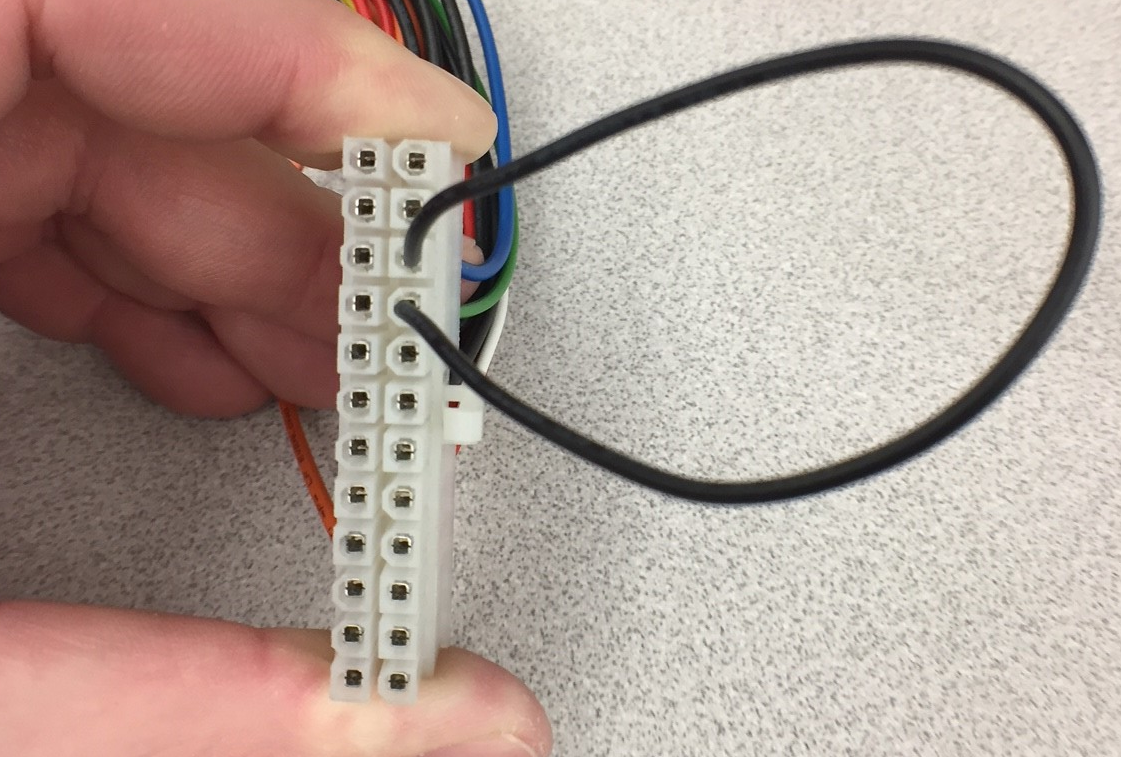
- Plug in the power supply. If it has no power switch you should hear the fan come on. If it does have a power switch, turn the unit on.
- If you have an Auto-Ranging multi-meter you can just set it to DC Voltage. If you have a traditional multi-meter, set the dial to the 10-Volt setting.
- Place the black (-) probe from your multi-meter on any of the pins labeled Ground (GND). Place the red (+) probe on the first pin and work your way around to each pin.
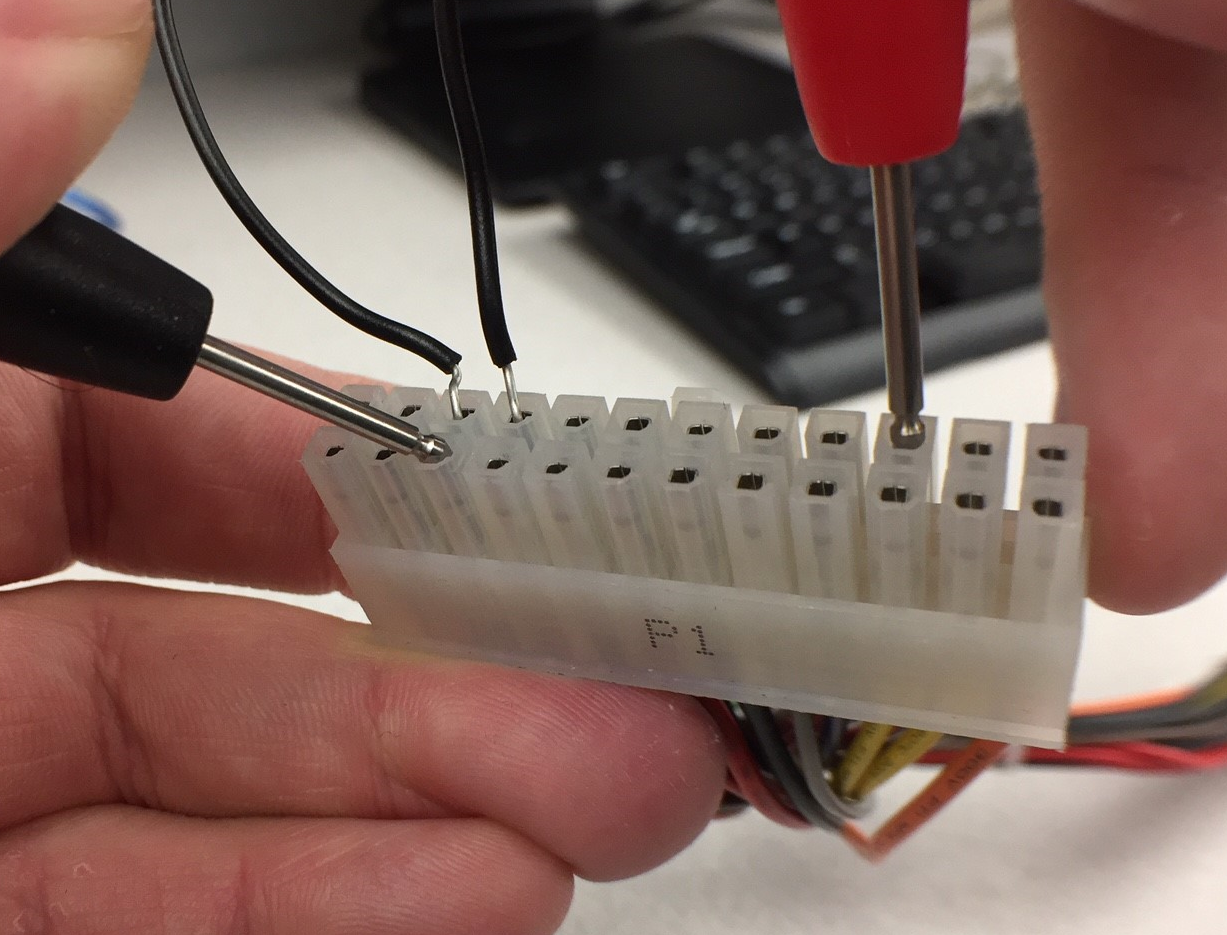
- Make a note of the voltage reach from each pin. Click here for a printable worksheet to record these readings.
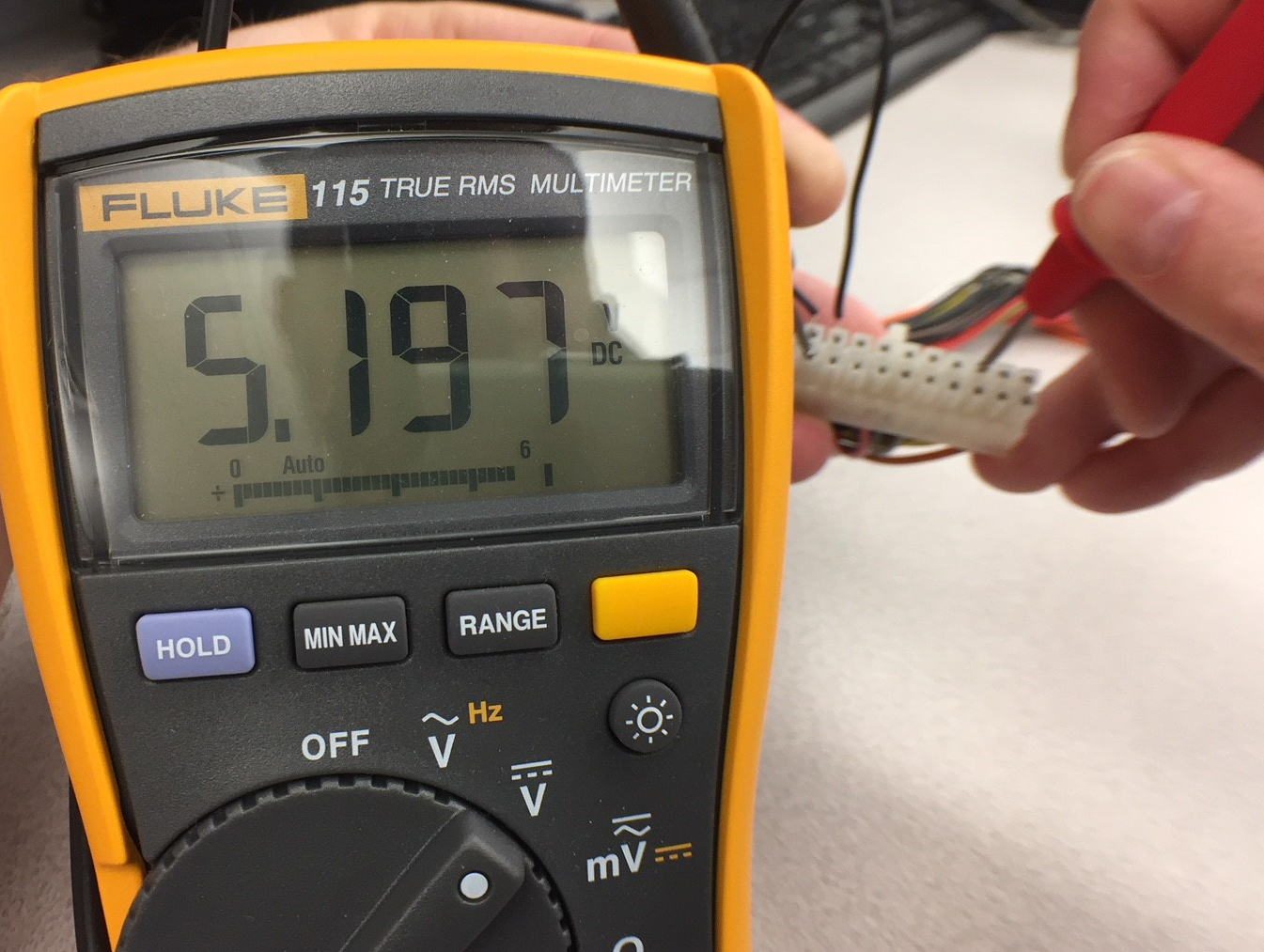
- Make a note of the voltage reach from each pin. Click here for a printable worksheet to record these readings.
- Compare the values from your meter readings to the value that should be supplied.
Note: These will almost never be exactly 3.3, 5.0 or 12.0 volts. Your actual meter readings should fall between the minimum and maximum voltage tolerances.
<br>
If your readings are above or below the allowable tolerances, noted on the worksheet, for that pin the power supply should be replaced.
<br>
How-to-Test-an-ATX-Power-Supply.pdf